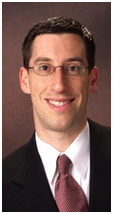Section 273 of the Patent Act mentions the possibility of a patent covering “a method of doing or conducting business.” Part of Bilski’s petition for certiorari relies on that section as an argument that Congress intended for Section 101 to cover business methods. That argument is a red herring — The Federal Circuit's Bilski decision did not eliminate business method patents. Rather, the decision only requires that any claimed process meet the machine-or-transformation test.
In his Federal Circuit amicus brief, professor Joshua Sarnoff wholly rejected the implication that Section 273 proves that Congress intended the Patent Act to extend coverage to novel business methods. He argues as follows:
Sarnoff: … [T]he State Street Bank decision did not motivate the enactment of Section 273’s prior user rights provision. Rather, it motivated restriction of that provision to business methods from an earlier and broader proposal. Congress did not approve of this Court’s decision, but focused on business methods because it felt that the strongest fairness arguments for a prior user defense existed in regard to the newly patentable subject matter. As stated by Senator Schumer, Section 273 “should be viewed as just the first step in defining the appropriate limits and boundaries of the State Street decision…. I believe that it is time for Congress to take a closer look at the potentially broad and, perhaps, adverse consequences of the State Street decision.”
Ratification should not be found here, given that Congress did not amend Section 101 or otherwise specifically address patent eligibility. Instead, Congress created only an isolated change to the law that responded to specific concerns raised by this Court’s changed interpretation of Section 101. See, e.g., Alexander v. Sandoval, 532 U.S. 275, 292 (2001) (“when, as here, Congress has not comprehensively revised a statutory scheme but has made only isolated amendments, we have spoken more bluntly: ‘It is “impossible to assert with any degree of assurance that congressional failure to act represents” affirmative congressional approval of the Court's statutory interpretation.’”) (citations omitted). Similarly, ratification should not be found here, given that the State Street Bank holding was a significant change to the law and conflicted with binding Supreme Court precedent. See, e.g., Central Bank of Denver v. First Interstate Bank of Denver, 511 U.S. 164, 185 (1994) (ratification is implied when Congress “reenact[s] statutory language that has been given a consistent judicial construction”). Had Congress thought that adopting a new defense to liability might affect subsequent interpretation of Section 101, it could have expressed its intent either to alter or to preserve earlier law – as it did with regard to Sections 102 and 103. See 35 U.S.C. § 273(b)(9) (2000).
Moreover, ratification of the “useful, concrete, and tangible result” test as applied in State Street Bank would pose serious constitutional concerns by authorizing patents for claims reflecting only insignificant post-solution activity. The test would thereby encroach on permissible public uses of categorically excluded public domain information, potentially extending protection beyond any inventive concept properly attributable to the applicant and retarding rather than promoting sequential innovation. It would require patents for non-technological inventive concepts, extending protection to activities that may not be within the useful arts (however broadly or narrowly that category is construed).
Given the reasonable alternative interpretation discussed above, this Court should not construe Section 273 to have ratified the “useful, concrete, and tangible result” test as applied in State Street Bank. See, e.g., Gomez v. United States, 490 U.S. 858, 864 (1989) (describing “settled policy to avoid an interpretation of a federal statute that engenders constitutional issues if a reasonable alternative interpretation poses no constitutional question”); Ashwander v. Tennessee Valley Auth., 297 U.S. 288, 346-48 (Brandeis, J., concurring) (establishing the policy). Finding such ratification would force the Court to decide whether Section 101 (at least since 1999) is constitutional. Cf. Richardson v. United States, 526 U.S. 813, 820 (1999) (“We have no reason to believe that Congress intended to come close to, or to test, those constitutional limits when it wrote this statute”). Without ratification, the binding Diehr-Flook precedent remains the law and avoids any such constitutional concerns.


 Boston Scientific v. Cordis (
Boston Scientific v. Cordis (

 This post was written by
This post was written by  Ex parte Cornea-Hasegan (
Ex parte Cornea-Hasegan ( forms.
forms.